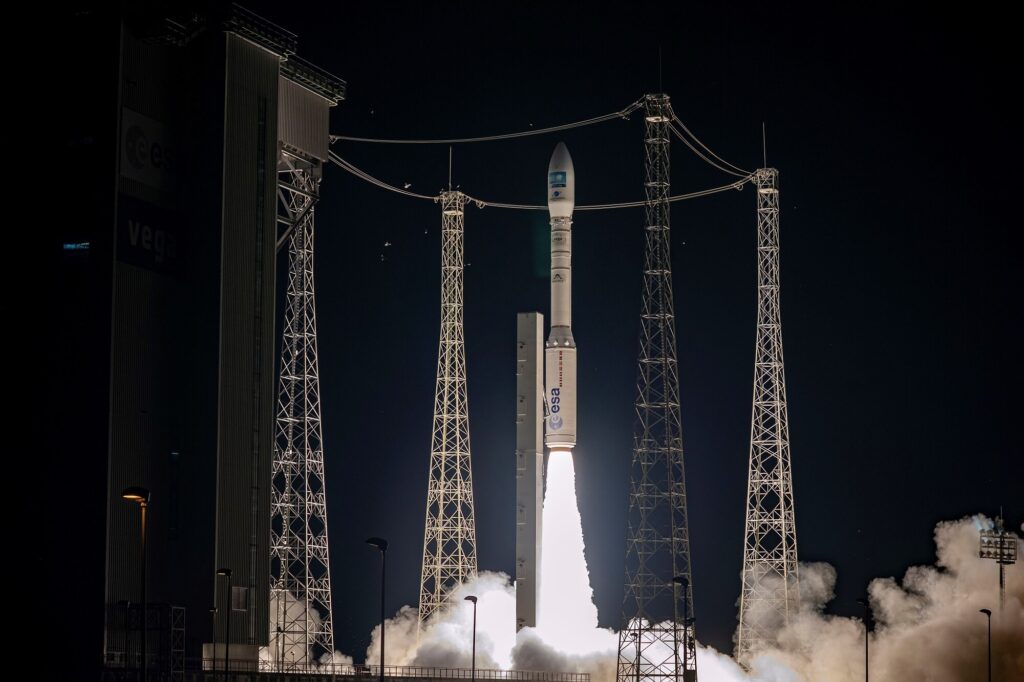Airbus’ Pléiades Neo 4 was launched into orbit on Arianespace’s Vega rocket from the Guiana Space Centre in Kourou on August 16, 2021.
The rocket payload, weighing approximately 2,268 pounds (1,029 kilograms) consisted of the Pléiades Neo 4 as the primary cargo, and four cubesats as auxiliary cargo belonging to the European Space Agency and the French start-up Unseenlabs. According to Airbus, the payload was released 620 kilometers off from the sun-synchronous polar orbit.
“With this mission, Arianespace demonstrates yet again the incredible versatility of Vega: we delivered safely into orbit the second satellite of the innovative Pleiades Neo 4 constellation on behalf of Airbus, alongside 4 auxiliary CubeSats for ESA and the French start-up Unseenlabs, said Stéphane Israël, Arianespace CEO. “More than ever, Vega is a key pillar of autonomous access to space for Europe, allowing the expansion of benefits from space to earth.”
The Pléiades Neo 4, wholly owned by Airbus Defence and Space, is the second satellite of the Pléiades Neo Earth observation four-satellite constellation to be launched into orbit this year. The first launch took place on April 28, 2021 according to Arianespace.
The satellite constellation is configured to provide imaging of the Earth’s surface at intervals of two to four times per day with a 30-centimeter-native resolution and imaging swath of 14 kilometers. According to Airbus the constellation is capable of covering the Earth’s landmass five times per year and is enabled to make acquisitions within 40 minutes in response to critical situations.
“Pléiades Neo will offer a truly best-in-class capability to our customers and will strongly enhance our position in the very high-resolution market” said François Lombard, Head of Intelligence at Airbus Defence and Space. “The first images from Pléiades Neo 3 are outstanding and confirm that we took the right decision in terms of design and performance to address the increasingly demanding requirements of the geospatial sector.”
